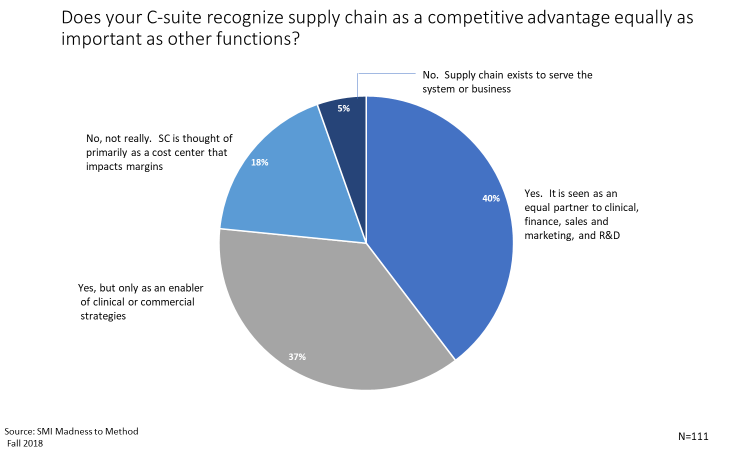|
|
Supply Chain's Seat at the TableOne of the most memorable supply chain presentations I've ever witnessed was by Peter Gibbons, current CEO of TireHub, who at the time was the Chief Supply Chain Officer for Starbucks. Peter did a humorous thought experiment with the audience that highlighted the value that supply chain brings to the business, and perhaps more importantly, how supply chain can most effectively persuade organizational behavior change. He asked the audience to imagine Starbucks commercial leadership bringing the following idea to supply chain: "We want to start selling live chickens in all of our stores across North America. Can you make this happen?" Show Don't Tell The audience rightly laughed at this idea, but Peter's point wasn't to garner a few laughs with supply chain colleagues on the crazy ideas arising out of their commercial teams. No, he was demonstrating an important adage from storytelling: If you want to capture the attention of an audience and change hearts and minds, you have to show them why they should pay attention, and why they should change. You can't simply tell them their idea is wrongheaded—you have to demonstrate it. And this is what Peter did over the next 10 minutes or so. He brought up all the factors that the supply chain organization would need to solve for in order to give commercial the opportunity to sell live chickens in outlets across North America. From the need for a robust reverse logistics capability due to the fact that around 20% of poultry dies in shipment, to the need for hyper fast cycle times, to visits from the FDA and the USDA to ensure compliance with all regulations, Peter's analysis demonstrated the complexity and cost to fulfilling this business strategy. Peter ended this thought experiment with the following statement to the hypothetical commercial team: "We can do this. Based on the factors we just covered, would you like us to proceed in building a poultry supply chain for Starbucks?" Earning equal Partner Status What Peter demonstrated for me is the playing field on which supply chain has to succeed in order to be viewed as equal partners to the rest of the business. At our Fall Forum, we asked the SMI Community whether or not the supply chain had equal partner status with other functions.
The results are quite positive—in my view I'm not sure the picture across the industry is as strong as what's demonstrated here, where 77% of respondents feel their supply chain is to some degree considered a competitive advantage to the C-suite. As one participant said after the poll, the results could reflect the seniority of the members attending SMI. However, if you were to compare these results to other industries, the healthcare results would most likely be between 12-15% lower based on cross industry studies I've seen. Perhaps supply chain has more of an innate competitive advantage in other industries and the situation in healthcare is truly unique. It's possible, but I think there is more to it than that. Some companies from other industries have done a fantastic job reframing the value supply chain brings to the business to the point where it is included in the very front end of decision-making on business strategy. Consider Apple. One of the hallmarks of Apple product design is the inclusion of supply chain at the earliest stages of the product design process. Apple does an incredible job of controlling for complexity in SKUs by simplifying variation in hardware and allowing variation and customization to explode in the digital space, e.g. in its application portfolio. Apple wouldn't have become the world's first trillion-dollar company without supply chain having the seat at the table it does. Yes We Can I spoke with Peter after his presentation and asked him if the best way for supply chain to gain and maintain a seat at the executive table was to take a "yes, but..." approach to the business, something a friend of mine had taught me about. "Yes business, we can do that, but here are the complicating factors." Peter nodded. "That’s close. I would say we take a 'yes, and' approach. Yes, we can do that. And here is how we would do it. Then you let the business determine for itself whether it is a good idea or not". Sound advice from a CSCO who is now a CEO. As always, we welcome your comments and suggestions. |
|
© Strategic Marketplace Initiative | PO Box 1318 | Westborough, MA 01581 | United States | 508 - 732 - 0059 | [email protected] |

